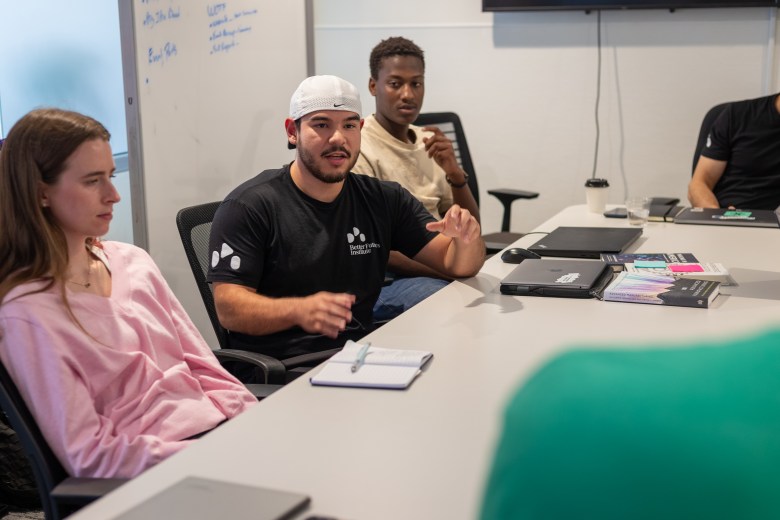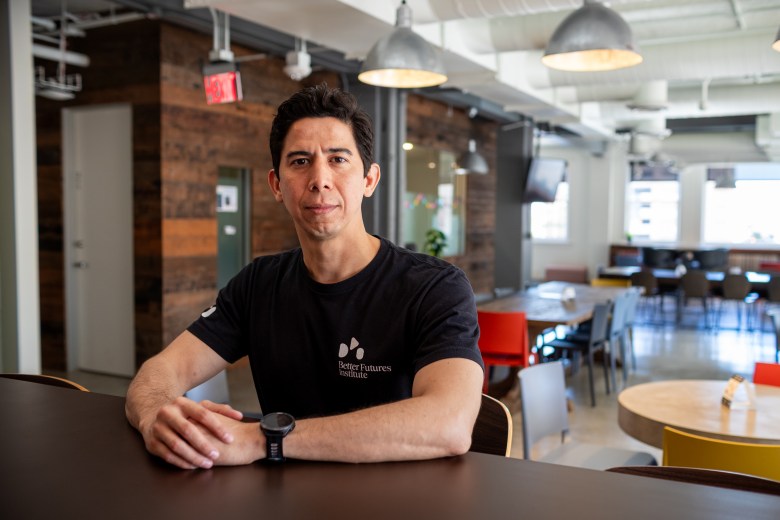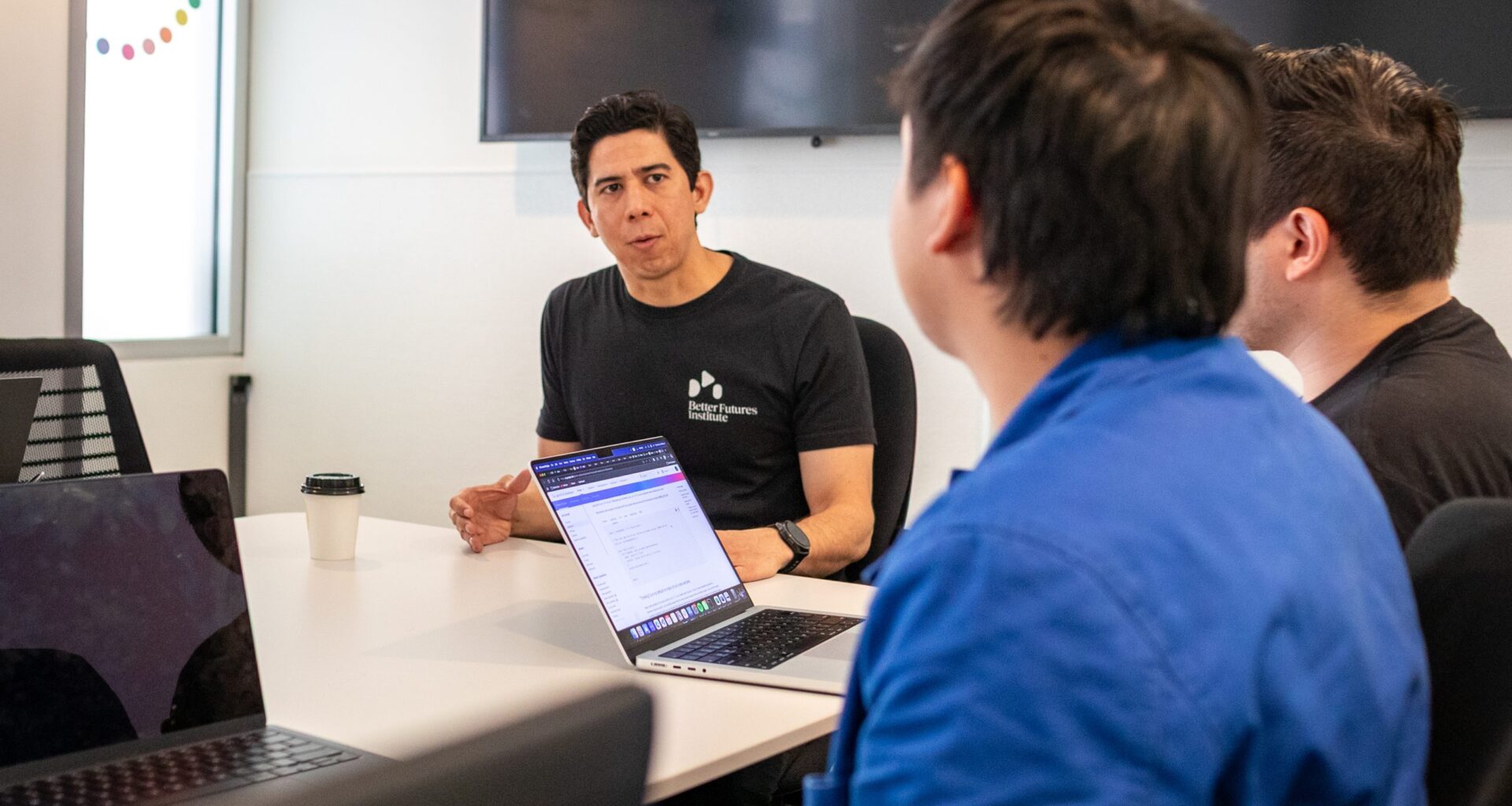For the last four academic semesters, Better Futures Institute has gathered college students from all fields of study together to figure out how to better connect San Antonio as a community through its Civic Tech Scholars internship.
The students are working every day to analyze data on services requested by San Antonio residents through the 311 online app and to develop an AI tool that helps the city’s Public Works department predict repair schedules and improve their maintenance workflows.
These could include potholes, trash collection, and any other request that comes in through the 311 reporting system.
Each cohort of 10-12 students has taken up this project at different stages, learning from what the last group did and figuring out what else is there to explore. At the end of the program each cohort is expected to present their findings to the institute and city partners.
“It doesn’t matter which discipline they’re focused on. You can learn from multiple disciplines,” Better Futures Institute co-founder and CEO Beto Gomez said about their approach. “That’s why the program that we’ve created is multidisciplinary by design.”
These opportunities are endless, Gomez said, from analyzing 10 years worth of data on potholes across the city to better predict the areas will need the most attention in coming years, to gathering community feedback and figuring out what one particular district or neighborhood would like to prioritize.
The Better Futures Institute’s goal is to better understand and address urban and social challenges. And to utilize technology, data, design, media production and workforce to innovate new ways to tackle these challenges.
Each student in the Civic Tech Scholars program represents these fields and is taught how to work with a diverse group to achieve a common goal. These students get paid for their time, which during the summer equates to a full-time job and turns into part-time during spring and fall to accommodate their school schedules.
“Working on a truly interdisciplinary team has been one of the best experiences,” said Bella Alvarado, a student participating in this summer’s internship. “I have gotten to be exposed to students my age that have so many different skill sets.”
 BFI Civic Tech Scholar Dylan Yáñez (center) speaks on the team’s AI project on Thursday. Credit: Blaine Young for the San Antonio Report
BFI Civic Tech Scholar Dylan Yáñez (center) speaks on the team’s AI project on Thursday. Credit: Blaine Young for the San Antonio Report
Alvarado, 20, was born and raised in San Antonio but decided to leave for college and is now a rising junior at Boston University where she is studying political science with a double minor in public policy analysis and urban studies.
This is the third internship she has completed in her hometown, having interned before in District 8 last summer, and later doing some virtual work as a regional organizer for Beto Altamirano’s mayoral run. This program seemed different, both in description and in the set of skills she would come to learn.
“Technology and data science are going to be essential to effective government in the future and making sure you can serve people well” Alvarado said. “So having those skills are essential to public service, but then also just across the board.”
For Gomez this was an opportunity to show students the combined impact that their knowledge and skills would have, while also giving them a chance to better connect with San Antonio and build a professional network.
Gomez studied communications and started his own tech company. He developed the 311 app that the city uses to communicate with the community.
 Better Futures Institute CEO Beto Gomez poses for a photo on Thursday. Credit: Blaine Young for the San Antonio Report
Better Futures Institute CEO Beto Gomez poses for a photo on Thursday. Credit: Blaine Young for the San Antonio Report
The idea is not to fully entice them to stay or return to San Antonio after graduation, but to give them tools and connections to be able to successfully do so if they want to serve their community. To see past their university bubble and engage in the community, Gomez said.
Dylan Yáñez, 22, moved to San Antonio from El Paso immediately after graduating high school in 2021. While he knew he wanted to focus on computer science, he hadn’t envisioned many opportunities outside of the corporate world. Through the institute he gained a new understanding of where his skills are needed and has built a new network to guide him.
“One of the biggest takeaways didn’t know when I first got into the program was the amount of connections that you would make,” Yáñez said. “Beto has introduced this to so many people from so many different walks of life. I’ve never experienced that at any internship or research (program) at all.”
Jonathan Rodriguez, 22, also had a similar reaction to his teammates. He was born and raised in the West Side of San Antonio and left for college to pursue a design degree at Savannah College of Art and Design. Now as a senior, he didn’t think he would come to learn and engage more with his hometown.
What caught Rodriguez’ attention was the program’s focus on technology and utilizing AI to better inform public works. But he said he didn’t expect to be exposed to so many opportunities to make a long-lasting difference.
“As a student being able to contribute like this has been really one of the best experiences,” Rodriguez said.
For Gomez this is a unique opportunity to offer many students the access he gained throughout his career. The demand so far has surpassed their bandwidth with 100-150 applicants each semester to fill up to a dozen seats. But it is this enthusiasm that has him and his team thinking on how to provide more avenues for students.
A couple of weeks ago, the Better Futures team held its first Workforce of the Future workshop, a one-day event in which students get to learn from public and private leaders to learn about a specific topic of interest to the city, get context and build connections.
The institute’s goal with these internship programs, workshops and other events is creating avenues for students, government and industry leaders, as well as community members to engage in conversations about their needs and wants. Gomez explains it as building an ecosystem where different sectors collide.
“To bring together academia, public service and the private sector to really drive innovation. To really create opportunities for young people. To have access to, you know, better paid jobs, to have access to good job opportunities,” Gomez said.
